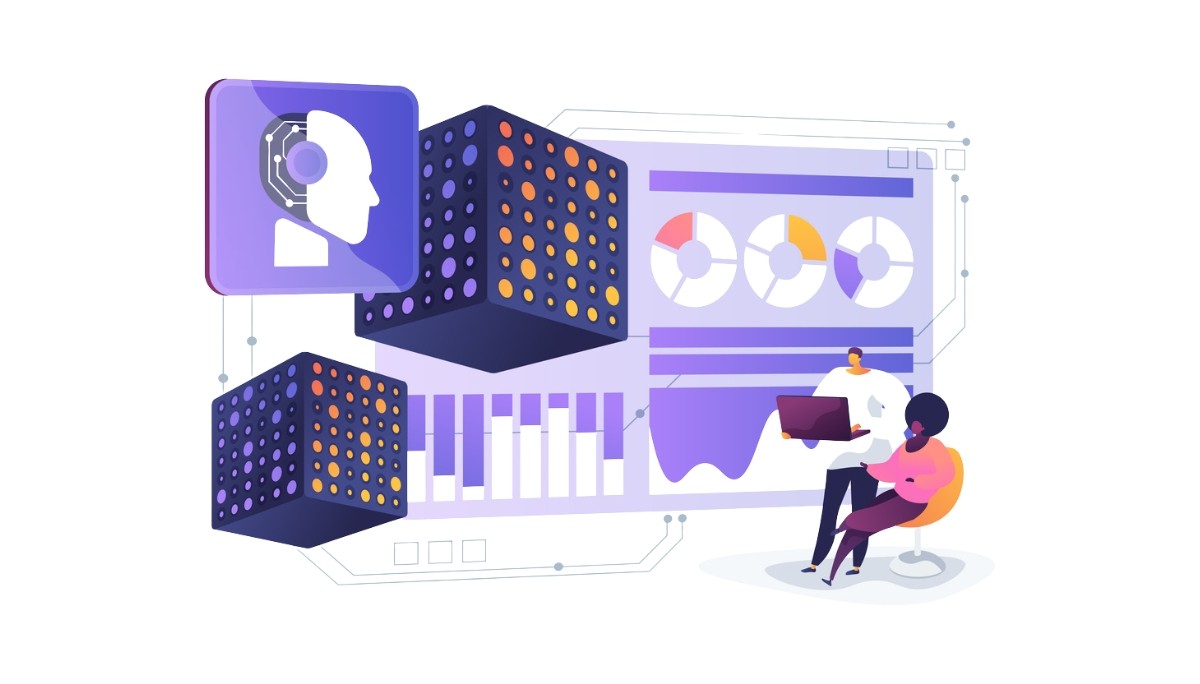What Is Adaptive Software Development? A Modern Guide for Developers
By
Samantha Cox
•
Jul 9, 2025
Software projects rarely go exactly as planned. Requirements evolve, new challenges pop up, and teams need to pivot fast. That’s where adaptive software development shines. Designed for change, it’s a framework that helps teams stay flexible, learn continuously, and collaborate effectively, even in the face of complexity.
In this article, we’ll answer what is adaptive software development, walk through its key phases, and explain why it’s essential for managing fast-moving, high-stakes projects.
Key Takeaways
Adaptive Software Development (ASD) is a flexible framework focused on continuous learning and collaboration, enabling teams to adapt swiftly to changing project demands.
ASD is structured around three overlapping phases: Speculate, Collaborate, and Learn, which ensure a holistic and iterative approach to software development.
Despite its benefits like enhanced flexibility and improved product quality, ASD faces challenges such as resource management and the risk of scope creep.
Understanding Adaptive Software Development (ASD)

Adaptive Software Development (ASD) is a dynamic framework that empowers teams to adapt to changing demands through lightweight planning and ongoing learning. Unlike traditional methodologies that rely on rigid planning and sequential phases, ASD emphasizes flexibility and continuous improvement, making it particularly suited for complex and dynamic projects.
The ASD approach fundamentally promotes a three-phase process for software development. This process includes speculating, collaborating, and learning. This iterative development model fosters human collaboration and self-organization, enabling software developers to respond swiftly to evolving customer needs and market trends.
Prioritizing adaptability and teamwork, ASD enhances the software development process, yielding high-quality outcomes tailored to each project’s unique requirements.
The Evolution of Adaptive Software Development
The roots of Adaptive Software Development (ASD) can be traced back to the early 1990s when it emerged as an evolution from Rapid Application Development (RAD). The rapid application development model prioritized real-world user feedback and emphasized an adaptive process over lengthy planning phases. However, the limitations of traditional methodologies necessitated a more flexible and adaptable approach, leading to the birth of ASD.
ASD’s foundation was solidified by key contributions from industry pioneers, whose innovative ideas were encapsulated in a seminal book published in 2000. This book laid the groundwork for understanding ASD’s principles and practices, providing a comprehensive guide for software developers and project managers seeking to navigate the complexities of modern software development.
Key Figures in ASD: Highsmith and Bayer
Jim Highsmith and Sam Bayer are the visionary figures behind the creation of Adaptive Software Development. Their collaborative efforts and thought leadership have been instrumental in shaping and popularizing ASD, emphasizing the importance of adaptability, collaboration, and continuous learning within the software development process.
Core Phases of Adaptive Software Development
Adaptive Software Development (ASD) is structured around three core phases: speculate, collaborate, and learn. These phases are not strictly sequential but rather overlap and interact continuously, reflecting the dynamic nature of software development projects. Each phase plays a crucial role in ensuring the success of the ASD process.
The three phases are:
Speculate phase: involves initial planning, defining project requirements, and determining release cycles.
Collaborate phase: emphasizes teamwork, communication, and speculation collaboration learning among team members.
Learn phase: focuses on continuous improvement and incorporating feedback loops.
Together, these phases create a holistic approach to software development that fosters continuous adaptation and responsiveness to change.
Speculate Phase
The speculate phase is the starting point of the Adaptive Software Development process, where project initiation and planning take center stage. During this phase, teams define project goals, assess market trends, and outline release cycles, all while maintaining the flexibility to adjust as new information emerges.
Managing uncertainty is a critical aspect of the speculate phase, requiring teams to break down business goals into manageable specific tasks and foster transparent communication. Envisioning project goals and anticipating challenges helps teams navigate development complexities more effectively through speculation collaboration.
Collaborate Phase
The collaborate phase is where the magic of teamwork and communication comes to life. This phase emphasizes strong collaboration among team members, stakeholders, and clients, ensuring that everyone is aligned with the project goals. Effective collaboration is crucial for transforming envisioned features into functional software.
Fostering self-organization and interpersonal collaboration, ASD enhances the product’s quality, user-friendliness, and customer focus intuitive products.
Learn Phase
The learn phase is the cornerstone of continuous improvement within Adaptive Software Development. This phase is built on the principle of continuous feedback, where teams reflect on their experiences and apply insights to enhance future iterations.
Through an iterative approach, teams can make incremental improvements, address evolving project requirements, and identify problems early in the developing process. This reflective period ensures that the development process remains aligned with user needs and market needs, allowing for further development.
Benefits of Adaptive Software Development

Adaptive Software Development (ASD) offers a multitude of benefits that align with the demands of modern new software development. One of the most significant advantages is enhanced flexibility, allowing teams to respond swiftly to changing customer needs and market dynamics.
Additionally, ASD promotes faster delivery times, improved collaboration, and high product quality. Incorporating continuous testing and fostering communication and teamwork ensures the final product meets the highest standards of quality and usability.
Challenges of Implementing ASD
While Adaptive Software Development (ASD) offers numerous benefits, it also presents several challenges. A primary challenge is resource management, as extensive testing and constant user feedback in ASD can increase project costs.
Managing constant changes and preventing scope creep are other significant challenges. The dynamic nature of ASD can create turbulence in project timelines, complicating the overall development process. Additionally, resistance from teams and stakeholders who are accustomed to traditional methodologies can hinder the successful implementation of managing complex systems.
Comparing ASD with Other Agile Methodologies

Adaptive Software Development (ASD) stands out among agile methodologies due to its emphasis on flexibility, continuous improvement, and adaptability. Unlike the Waterfall model, which relies on a sequential approach, ASD thrives in environments characterized by uncertainty and complexity.
When compared to Scrum and Kanban, ASD prioritizes continuous collaboration and iterative development over structured sprints and visual workflow management. This unique approach makes ASD particularly effective in projects where requirements are constantly evolving and adaptability is key.
Practical Applications of ASD
Several high-profile companies have successfully implemented Adaptive Software Development (ASD) to enhance their software projects and respond quickly to market changes. Spotify, for instance, utilized small, autonomous teams called ‘squads’ to rapidly develop and adapt features like personalized playlists.
Similarly, Netflix employed data analytics and user feedback to refine their recommendation engine, enabling quick adjustments to content strategies. Companies like Airbnb and Slack have also leveraged ASD to enhance user tools, pricing suggestions, and communication features, demonstrating the versatility and effectiveness of the ASD approach.
Getting Started with Adaptive Software Development

Teams adopting Adaptive Software Development (ASD) must build strong trust and respect among other team members. Effective collaboration relies on mutual commitment and shared responsibility for project outcomes.
Project managers play a vital role in navigating the intense collaborative nature of ASD. Key meetings should be structured to facilitate open communication, and teams should prioritize continuous learning and reflection to improve their performance and adapt to changing requirements management.
Overview of Adaptive Software Development (ASD)

Adaptive Software Development (ASD) is a methodology focused on flexibility. It aims to enhance responsiveness to changes in the software development process. The key phases of ASD (Speculate, Collaborate, and Learn) overlap and interact continuously, creating a holistic approach to managing software development projects.
The benefits of ASD, such as increased flexibility, rapid delivery, and improved product quality, make it well-suited for modern software development. However, challenges like resource management and the risk of scope creep must be addressed to ensure successful implementation.
Summary
Adaptive Software Development (ASD) provides a complete framework. It is designed for effectively managing complex software systems projects and meeting software requirements. By emphasizing flexibility, continuous feedback, and collaboration, ASD helps teams develop software that aligns with evolving user needs and market trends.
Teams can adopt ASD by building strong relationships, promoting effective communication, and embracing continuous learning. While challenges like resource management and scope creep may arise, the benefits of ASD, including rapid delivery of features and improved product quality, make it a valuable approach for many organizations.




